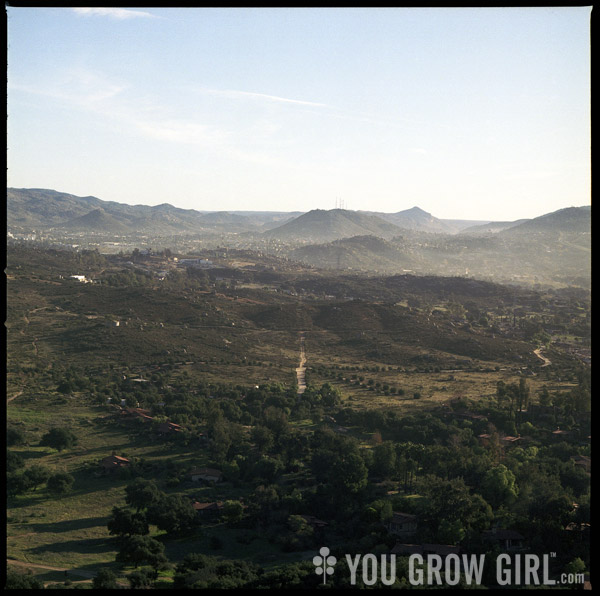

I recently had an assortment of old film developed (recently being tonight) and one of those rolls contained photos that I took last January at Rancho la Puerta in Tecate, Mexico.
Looking at the film, I was very pleased to find a few images of a succulent genus that I had never heard of until we stumbled upon it one morning on a self-directed hike up the mountain. The pretty blue succulent was growing right out of rock in a spot where there was a divot just deep enough to hold about an inch or so of sandy soil. I knew on sight that it had to be a Crassulaceae; I had seen a few as bluish-green blurs jutting out of the side of yellow rock on our bus trip from San Diego to the border. I was so taken by this discovery that I had to know more. Later that day I headed over to the ranch library where they keep field guides to native plants of Baja California (among many other books on various topics that visitors can check out during their stay) in an effort to identify it.

I’ve included this digital shot so that you can better see the blue-green-ness of the plants/ foliage.
I was never able to identify exactly which species it is — they all look so similar and I did not see any in bloom. However, I’ve narrowed it down to two: Dudleya edulis, which is listed as native to coastal California and Baja California and Dudleya attenuata ssp. orcuttii, which is native to the same region and specifically lists the Coastal Sage Scrub Chaparral that the ranch sits on.

Here’s what I saw looking out from the spot where I found the Dudleya. Oh how I wish I was there right now.
The end.
Maybe some expert somewhere could help you confirm its species. But it does look the same as Dudleya Edulis photos in http://calphotos.berkeley.edu/cgi/img_query?enlarge=0000+0000+0209+0684.